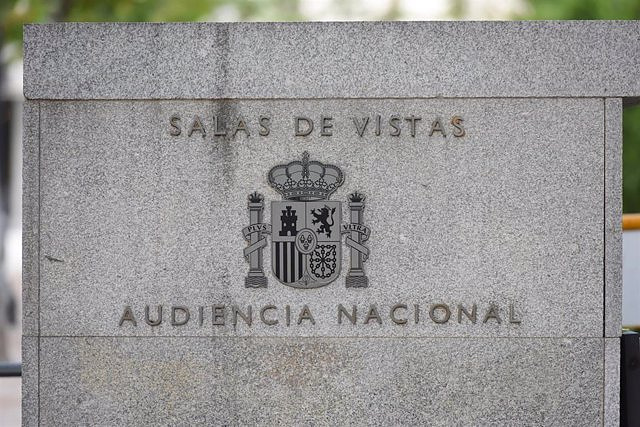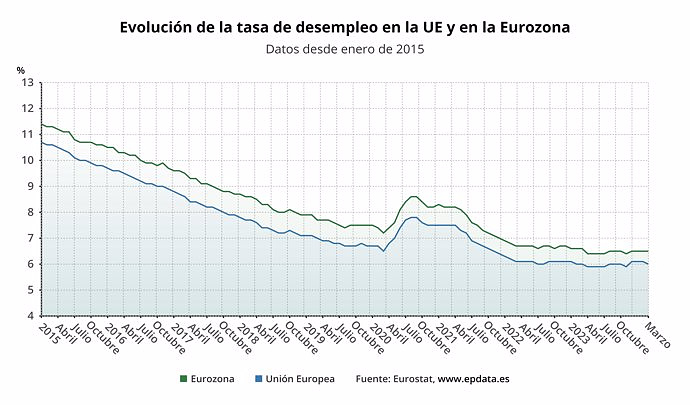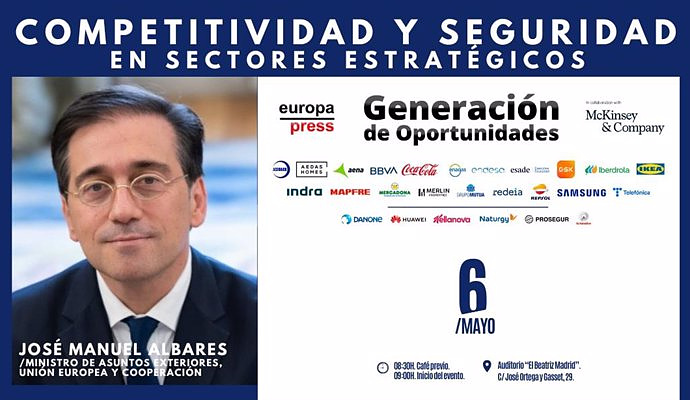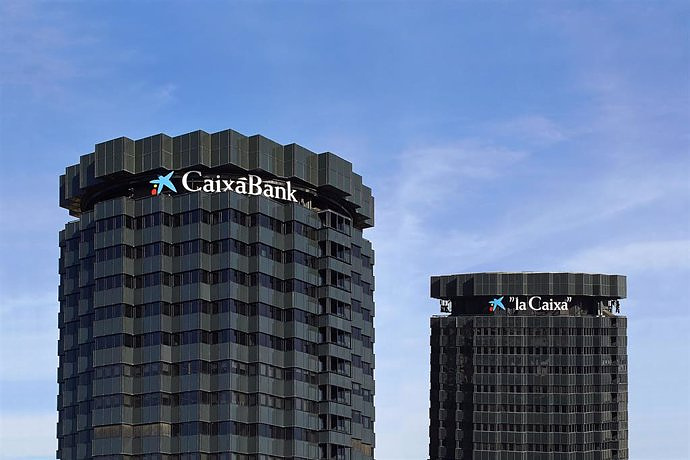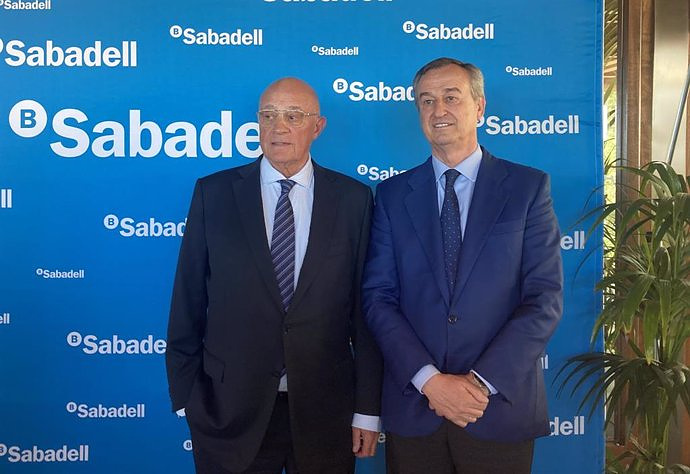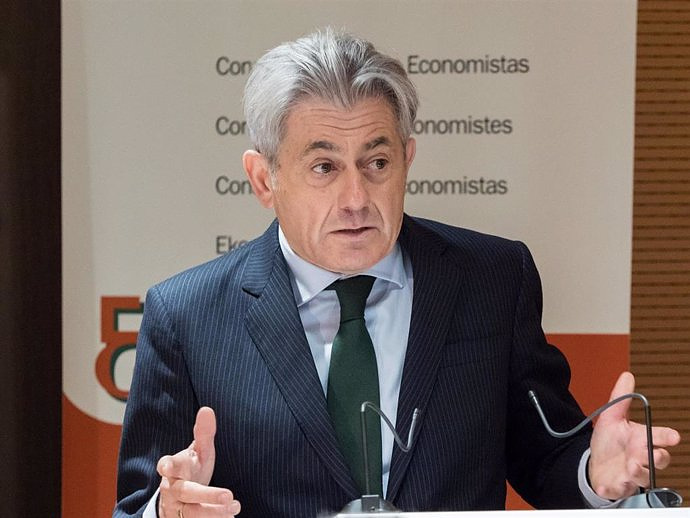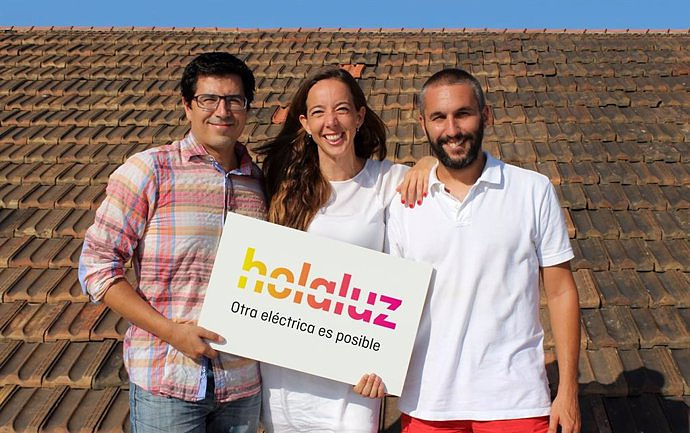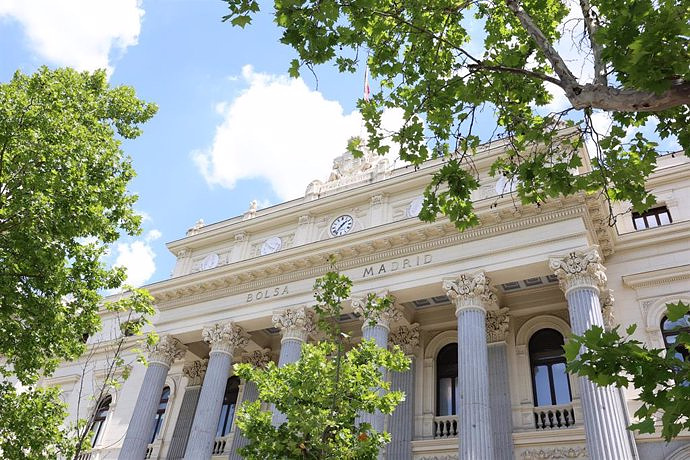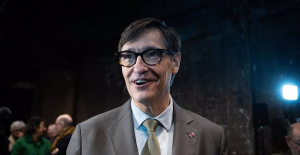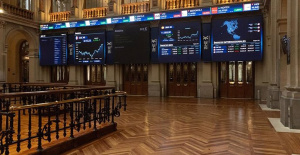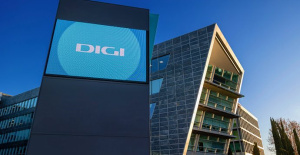There will be changes in the request for sentences due to the agreements reached with a large part of the defendants
MADRID, 9 Abr. (EUROPA PRESS) -
The anti-drug prosecutor Manuel Pérez Veiga will announce his final conclusions brief on Tuesday in the trial that is being followed in the National Court against 81 people related to a greater or lesser level with the criminal organization known as 'Los Mami'. Given that there have been a large number of defendants who have acknowledged the facts in whole or in part, including Ana María Cameno, known as 'the queen of coca', and one of the leaders of the network, Artemio López Tardón, The Public Prosecutor's Office will significantly modify what was stated in its indictment.
This is how he explained it himself before the plenary on the last day that was held before the Easter break, when he asked the Fourth Section court for a reasonable time to work on the modifications of the sentences that interested the defendants. It should be remembered that they are accused of crimes ranging from money laundering to the illegal possession of weapons, through drug trafficking, document falsification, against the Public Treasury or currency counterfeiting.
The oral hearing thus faces its last days after both the statements of the accused and the witnesses have been produced, and once the documentary evidence has been considered reproduced. Now, this week the court has planned to hold four conferences (until Friday) in which, in addition to knowing the prosecutor's conclusions, those of the rest of the parties will be presented and after the reports it will be the turn of the last word for the defendants before they is seen for sentencing.
According to the prosecutor in his provisional indictment, the organization was "extremely complex, powerful, labyrinthine, intertwined, highly diversified and meticulously planned", which was also "permanent and structured", which had international projection and which was subdivided " in no less than four major sectors or ramifications".
From the investigation, it has been learned that this organization introduced at least 7.5 million tons of cocaine into Spain for distribution throughout Europe and also laundered the tens of millions of euros obtained from the sale. The prosecutor pointed out that this "powerful" network "whose criminal activities took place inside and outside the Iberian Peninsula" acted over a "very long period of time" that lasted at least from the beginning of 2007 until the summer of 2011. .
In the indictment issued in 2018 by the instructor Ismael Moreno, head of the Central Investigating Court number 2, it was recorded that Ana María Cameno, known as 'the queen of coca', was also prosecuted for these events. And he pointed out that in the case of Álvaro López Tardón, in prison in the United States where he is serving a 150-year sentence for money laundering, he maintained the national and international search and arrest warrant.
Precisely this, along with his brother Artemio, were the leaders of one of the four branches of the "extremely complex criminal organization" that only in 2010 earned 52 million euros for their illegal activities, according to the magistrate in his car. Both had in Spain, the United States and Colombia an elaborate infrastructure for drug trafficking operations deployed from South America to Europe.
Said infrastructure also allowed them to plan and execute the development of complex and varied laundering operations towards the United States for which they used a diversity of people that allowed them to launder the proceeds from drug trafficking through shell companies. To this end they also used numerous people as front men.
These companies include high-end vehicle sales companies and proof of this is that some of the front men appear as owners of numerous cars such as a Lamborghini Gallardo, a Lamborghini Murciélago, an Audi R8, a Ferrari F 430 and a Ford GT.
Another of the methods used to launder money was the simulation of the acquisition of a painting entitled 'Lunch' by Velázquez, which was actually a "crude manipulation", said the judge, for a value of 24 million euros, faking its subsequent sale for 880,000 euros. In the false contract, the then partner of Álvaro López Tardón, Sharon Cohen, appeared as the buyer, representing a Panamanian company with which she had no real ties.
In the search carried out in a villa in Madrid owned by the López Tardón brothers, the Police found the amount of 23,974,853 euros in cash, most of it hidden in zulos practiced in the house, which had extreme security measures made up of a network of surveillance cameras of the highest technology. In fact, to find the money, the agents had to dig the floor of some rooms, lifting the plates to find, among others, a 'zulo' in which more than 700 vacuum-sealed plastic packages were hidden.
In the house registry, pages with three items 'A1 - 19,000,000' were also seized. A2 - 10,000,000. A3 - 5,354,000', together with the sum of these three items: 34,354,000. The first and third dealt, according to the judge, with the amounts of money found in the house on Azaleas street, while "the second of those items reflects the amount of money that, even today, is hidden in a third zulo owned by the criminal organization in some unknown place and that until now has not been able to be located".
The second branch was led ("supremely responsible" says the prosecutor) by the couple formed between Ana María Cameno (alias 'Pollito' or 'Llorona') and David Vela, who, along with other members, were in charge of receiving the cocaine in Spain and distribute it to numerous subjects, among them the members of the third and fourth branches.
For this they had a "gigantic and enormous" clandestine laboratory in a rustic farm in Villanueva de Perales (Madrid) for the manufacture, manipulation and adulteration of narcotic substances, in which four professors of Biochemistry from the Javeriana University worked "cooking". from bogota, Colombia.
"These four individuals traveled from their native country, Colombia, to Spain to be in charge not only of the actual installation of the gigantic clandestine laboratory owned by the transnational criminal gang in the rustic farm located in Villanueva de Perales, but also to develop, using their knowledge, the complex process of manufacturing, elaboration and adulteration of the narcotic substance, through the use of huge amounts of chemical products", reads the letter.
The third of the sectors of the organization was led by the brothers Raúl and Víctor Juárez Smith, whose main function was the distribution and sale of a large part of the cocaine that arrived in Spain, while the fourth was commanded, always according to the order of processing, by the Spanish-Colombian Laurentino Sánchez Serrano and who, like the previous group, was dedicated to the reception, distribution and, in addition, to the laundering of funds through a fictitious business network.

 Exploring Cardano: Inner Workings and Advantages of this Cryptocurrency
Exploring Cardano: Inner Workings and Advantages of this Cryptocurrency Seville.- Economy.- Innova.- STSA inaugurates its new painting and sealing hangar in San Pablo, for 18 million
Seville.- Economy.- Innova.- STSA inaugurates its new painting and sealing hangar in San Pablo, for 18 million Innova.- More than 300 volunteers join the Andalucía Compromiso Digital network in one month to facilitate access to ICT
Innova.- More than 300 volunteers join the Andalucía Compromiso Digital network in one month to facilitate access to ICT Innova.-AMP.- Ayesa acquires 51% of Sadiel, which will create new technological engineering products and expand markets
Innova.-AMP.- Ayesa acquires 51% of Sadiel, which will create new technological engineering products and expand markets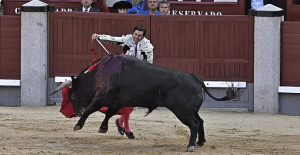 The Community will provide facilities and support to the Bullfighting Prize with the help of the Toro de Lidia Foundation
The Community will provide facilities and support to the Bullfighting Prize with the help of the Toro de Lidia Foundation Page will contact the bullfighting sector to create, from C-LM, Bullfighting Awards that will have national reach
Page will contact the bullfighting sector to create, from C-LM, Bullfighting Awards that will have national reach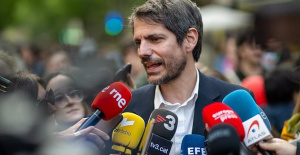 Urtasun, on eliminating the National Bullfighting Award: "The majority of Spaniards support the decision I have made"
Urtasun, on eliminating the National Bullfighting Award: "The majority of Spaniards support the decision I have made"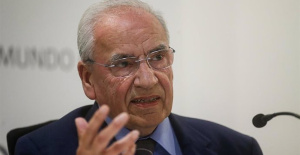 Alfonso Guerra sees Sánchez in an "autocratic" drift and accuses him of generating division "between the two Spains"
Alfonso Guerra sees Sánchez in an "autocratic" drift and accuses him of generating division "between the two Spains" How Blockchain in being used to shape the future
How Blockchain in being used to shape the future Not just BTC and ETH: Here Are Some More Interesting Coins Worth Focusing on
Not just BTC and ETH: Here Are Some More Interesting Coins Worth Focusing on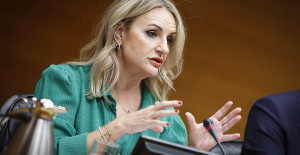 The Generalitat calls for aid worth 4 million to promote innovation projects in municipalities
The Generalitat calls for aid worth 4 million to promote innovation projects in municipalities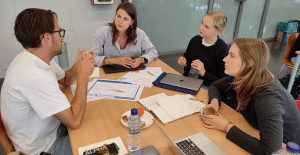 UPV students design an app that helps improve the ventilation of homes in the face of high temperatures
UPV students design an app that helps improve the ventilation of homes in the face of high temperatures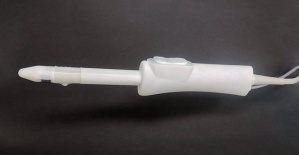 Ivace and promotes a less invasive device for the early detection of prostate cancer
Ivace and promotes a less invasive device for the early detection of prostate cancer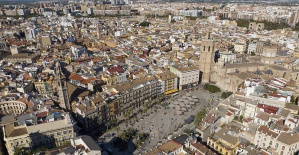 Valencia unanimously approves the ordinance to allocate spaces to test innovative initiatives
Valencia unanimously approves the ordinance to allocate spaces to test innovative initiatives A million people demonstrate in France against Macron's pension reform
A million people demonstrate in France against Macron's pension reform Russia launches several missiles against "critical infrastructure" in the city of Zaporizhia
Russia launches several missiles against "critical infrastructure" in the city of Zaporizhia A "procession" remembers the dead of the Calabria shipwreck as bodies continue to wash up on the shore
A "procession" remembers the dead of the Calabria shipwreck as bodies continue to wash up on the shore Prison sentences handed down for three prominent Hong Kong pro-democracy activists
Prison sentences handed down for three prominent Hong Kong pro-democracy activists ETH continues to leave trading platforms, Ethereum balance on exchanges lowest in 3 years
ETH continues to leave trading platforms, Ethereum balance on exchanges lowest in 3 years Investors invest $450 million in Consensys, Ethereum incubator now valued at $7 billion
Investors invest $450 million in Consensys, Ethereum incubator now valued at $7 billion Alchemy Integrates Ethereum L2 Product Starknet to Enhance Web3 Scalability at a Price 100x Lower Than L1 Fees
Alchemy Integrates Ethereum L2 Product Starknet to Enhance Web3 Scalability at a Price 100x Lower Than L1 Fees Mining Report: Bitcoin's Electricity Consumption Declines by 25% in Q1 2022
Mining Report: Bitcoin's Electricity Consumption Declines by 25% in Q1 2022 Oil-to-Bitcoin Mining Firm Crusoe Energy Systems Raised $505 Million
Oil-to-Bitcoin Mining Firm Crusoe Energy Systems Raised $505 Million Microbt reveals the latest Bitcoin mining rigs -- Machines produce up to 126 TH/s with custom 5nm chip design
Microbt reveals the latest Bitcoin mining rigs -- Machines produce up to 126 TH/s with custom 5nm chip design Bitcoin's Mining Difficulty Hits a Lifetime High, With More Than 90% of BTC Supply Issued
Bitcoin's Mining Difficulty Hits a Lifetime High, With More Than 90% of BTC Supply Issued The Biggest Movers are Near, EOS, and RUNE during Friday's Selloff
The Biggest Movers are Near, EOS, and RUNE during Friday's Selloff Global Markets Spooked by a Hawkish Fed and Covid, Stocks and Crypto Gain After Musk Buys Twitter
Global Markets Spooked by a Hawkish Fed and Covid, Stocks and Crypto Gain After Musk Buys Twitter Bitso to offset carbon emissions from the Trading Platform's ERC20, ETH, and BTC Transactions
Bitso to offset carbon emissions from the Trading Platform's ERC20, ETH, and BTC Transactions Draftkings Announces 2022 College Hoops NFT Selection for March Madness
Draftkings Announces 2022 College Hoops NFT Selection for March Madness